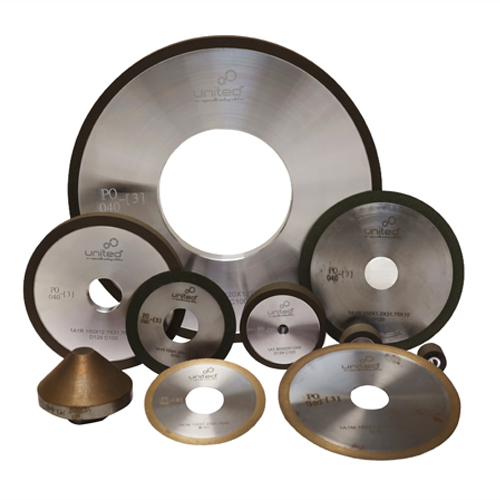Have questions before you get started?
Our team is here to provide the answers and support you need.
Different Types of Abrasives used in Grinding Wheels
The natural abrasives are emery and corundum, these are impure forms of aluminum oxide.
Artificial abrasives are silicon carbide and aluminum oxide.
The abrasives are selected depending upon the material being ground. ‘Brown’ aluminum oxide is used for general purpose grinding of tough materials. ‘White aluminum oxide is used for grinding ferrous and ferrous alloys. ‘Green’ silicon carbide is used for very hard materials with low tensile strength such as cemented carbides.

Grain Size or Grit Size of Grinding Wheel
The number indicating the size of the grit represents the number of openings in the sieve used to size the grain. The larger the grit size number, the finer the grit.
Grade of Grinding Wheel
Grade indicates the strength of the bond and, therefore, the ‘hardness’ of the wheel. In a hard wheel the bond is strong, and securely anchors the grit in place and, therefore, reduces the rate of wear. In a soft wheel, the bond is weak and the grit is easily detached resulting in a high rate of wear.
Bond of Grinding Wheel
The bond is the substance which, when mixed with abrasive grains, hold them together, enabling the mixture to be shaped to the form of the wheel, and after suitable treatment to take on the necessary mechanical strength for its work. The degree of hardness possessed by the bond is called the ‘grade’ of the wheel, and indicates the ability of the bond to hold the abrasive grains in the wheel. There are several types of bonding materials used for making wheels.
Types of Bonds in Grinding Wheel
Our team is here to provide the answers and support you need.

We provide engineered solutions to various engineering industries for their demanding applications.
+91-98205 16718
+91-99876 97270
unitedsealing@gmail.com
sales2@unitedsealing.com
Jogeshwari West, Mumbai, Maharashtra, INDIA
Sign up our newsletter to get update information, news and free insight.